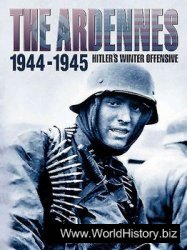On October 7. the Marines set out again in force with two battalions of the 5th Marines to engage the Japanese at the mouth of the Matanikau. Inland, two battalions of the 7th Marines, the 3rd Battalion, 2nd Marines, and the division’s scout-sniper detachment were to drive west and then south after crossing the Matanikau upstream to pin the Japanese against the coast. Three battalions of artillery were in direct support of the attack. The advancing Marines ran into the Japanese 4th Infantry Regiment, which was also moving forward to the attack. The resulting action spread over two days in the rain-swept jungle. The Americans trapped one sizable pocket of Japanese near the coast; only a few escaped death. Another force of 1,500 men was isolated in a deep ravine inland.

A A rapid cash-in on the souvenir market; the "novelty shop" set up by Corporal Robert E. Weeks of Illinois. His stock-in-trade consisted of painted-up Japanese trophies.
V Normal conditions during the rainy season on Guadalcanal.


A A dramatic piece of propaganda by the American war artist Lea. A dogged U. S. pilot on a mission over the Solomons heads back into combat, with a suitably-punctured aircraft, victory tallies marking past kills, and a Japanese plane plunging into the sea behind him.
¦
There, while Marine riflemen on the high ground picked off the hapless enemy soldiers as they struggled up the steep slopes, artillery shells methodically blasted the floor of the ravine. Vande-grift broke off the action on October 9 when Intelligence indicated that a strong Japanese attack would be mounted from the Kokumbona area. When the Marine battalions retired to the perimeter, they took with them 65 dead and 125 wounded, but they left behind 700 Japanese dead.
The Intelligence was correct. General Hyakutake himself had landed on Guadalcanal on October 9 to take personal charge of the Japanese effort. He brought with him heavy reinforcements, the rest of the 2nd Division to join those elements already on the island, two battalions of the 38th Division, and more artillery. By mid-October, Hyakutake’s strength was about 20,000 men, but Vandegrift had 23,000, for on October 13, the first American Army troops arrived on Guadalcanal, the 164th Infantry of the Americal Division from New Caledonia. The night after the 164th arrived, Japanese battleships fired a 90-minute bombardment against Henderson Field, partly to cover a daylight run of Tanaka’s transports carrying Hyakutake’s reinforcements. Although only 42 of Geiger’s 90 planes were operational when the bombardment ended and Henderson Field was a shambles, the pilots used the fighter strip as soon as the sun rose and made the muddy runway firm enough to take off from.
Any plane that could carry a bomb or torpedo, including General Vandegrift’s I lumbering PBY flying boat, attacked the transports. Three were left burning and' beached and the other two fled, but some
4,000 men of the 2nd Division were able] to get ashore. |j




 World History
World History









